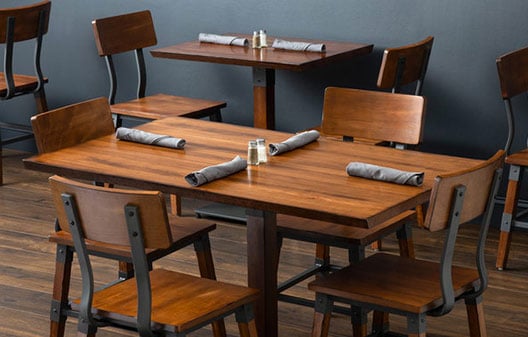Mechanical Design
In terms of mechanical design, we went from a basic design and CAD from the prototype and mechanical analysis section to implementing a mechanical design. Our design considerations from the prototype to this mechanical design were the following, including our brainstorming and design process:
The base for the mechanism
Going into the design for the base we knew we needed a fairly large base as the movement of the mechanism was wide. We decided on a 20 by 24 wooden 1/4 inch wood base. Instead of connecting the stationary hook to the closest point, we decided on the peak of the semi-circle part of the movement to have a little bit of distance between the two ends of the noodles as to not cause issues with the dough getting stuck together.
Mounting the motor
After getting advice from Conner and researching motor accessories, we decided on a motor coupler and L-bracket. The following laser-cut and assembled pieces were designed for the motor.
The above design was to adapt the motor coupling connector. By bolting the coupler to the link with M3 bolts, we effectively connected the motor and ensured a full and unimpeded rotation of the link. One issue that came up was the minimal room for the nuts below the coupler, however, this was remedied easily by attaching it upside down.
Using an L-bracket we could connect the motor to the bottom of the base and to a side leg to maintain weight. However, as we prioritized other features, the side leg was left out. This is a part of the mechanical design that would be included in our future designs.
Connecting linkages
For connecting linkages, we decided to focus on seamless connections between the links, while trying to reduce the risk of failure with press fits. The press fit for the bearings was more consistent than the rods, so we decided on links with just bearings. We used high-performance 6mm bearings.
These bearings allow for smooth rotation and make for a clean look to our linkages.
Aesthetic design for the intended audience
A major part of the mechanical design we hadn't considered in the prototype phase was the overall aesthetic and how that is dependent on the audience. Since our robot is intended to pull noodles. For this, we researched restaurants and decided on a table as the overall design. We used wood as the material to mimic a fancy wooden table at a nice restaurant.





Welcome to the University Wiki Service! Please use your IID (yourEID@eid.utexas.edu) when prompted for your email address during login or click here to enter your EID. If you are experiencing any issues loading content on pages, please try these steps to clear your browser cache.